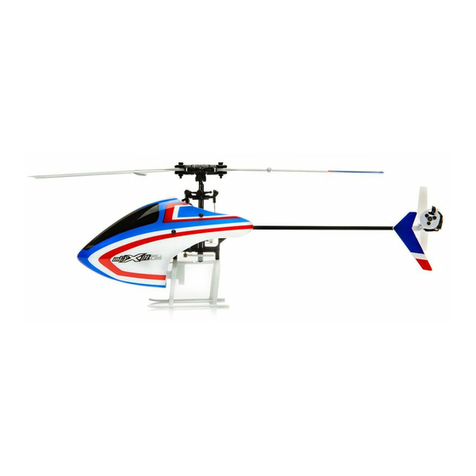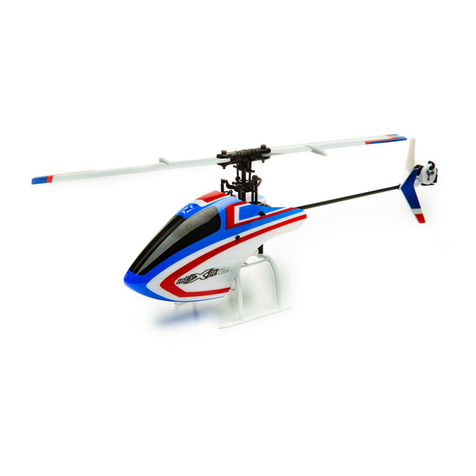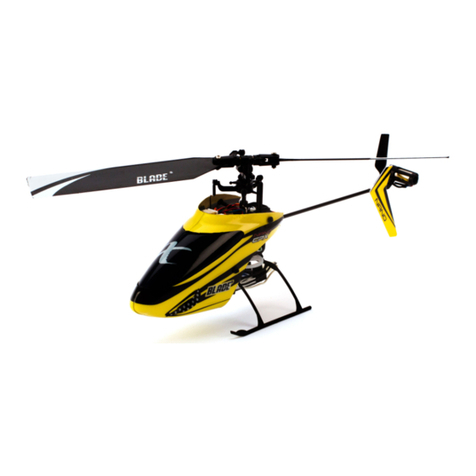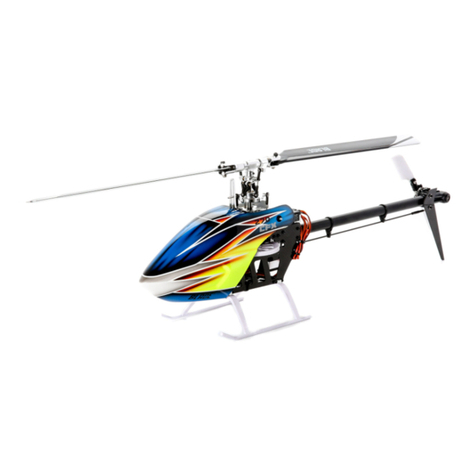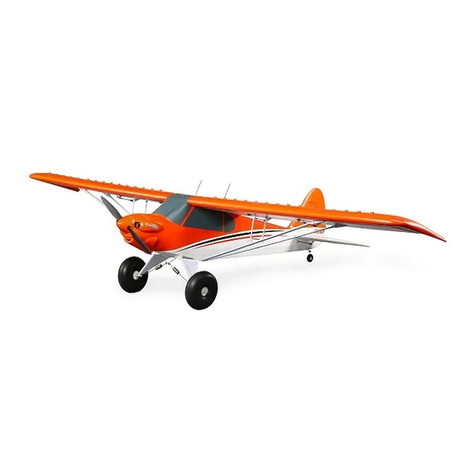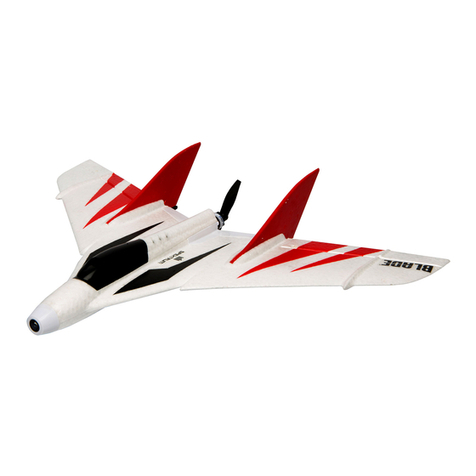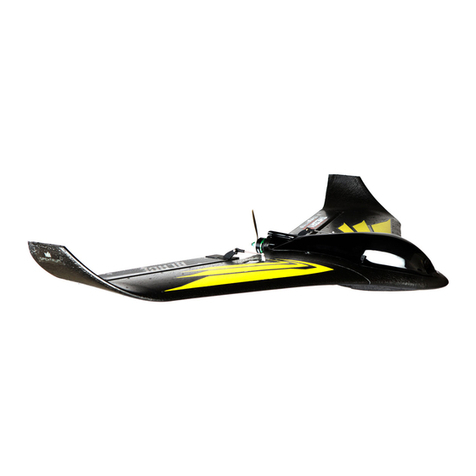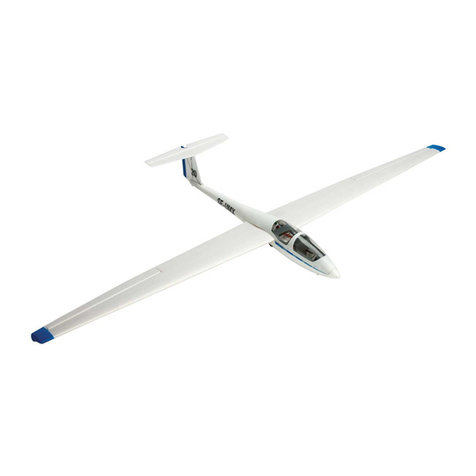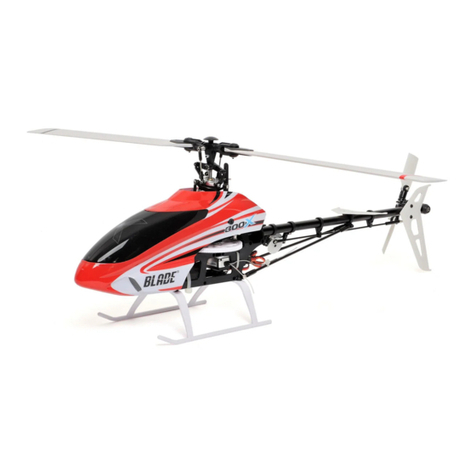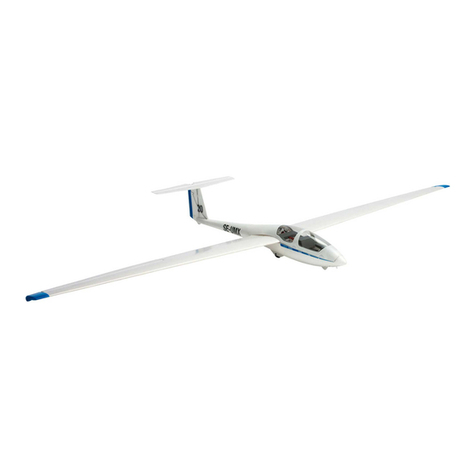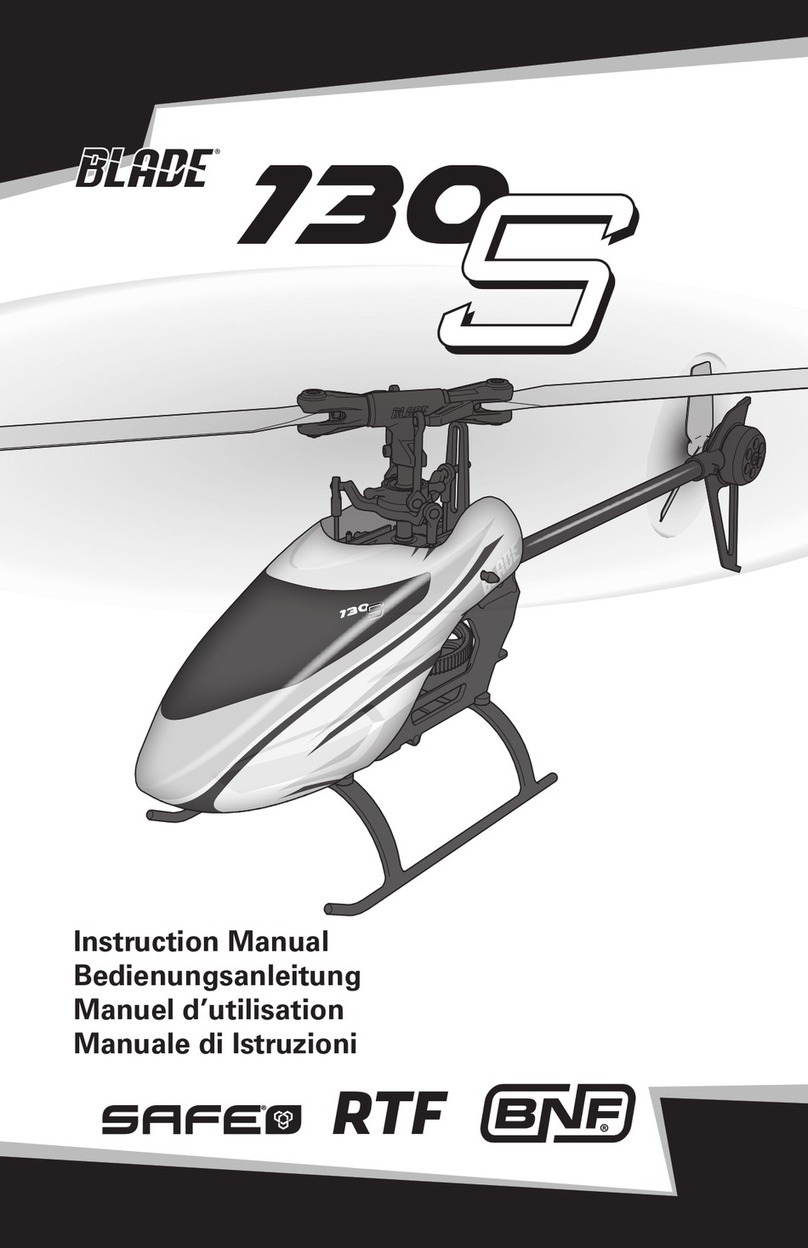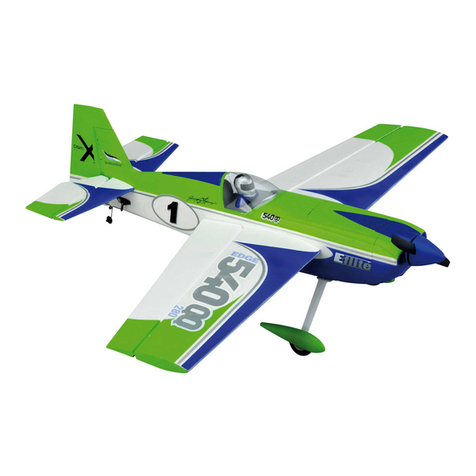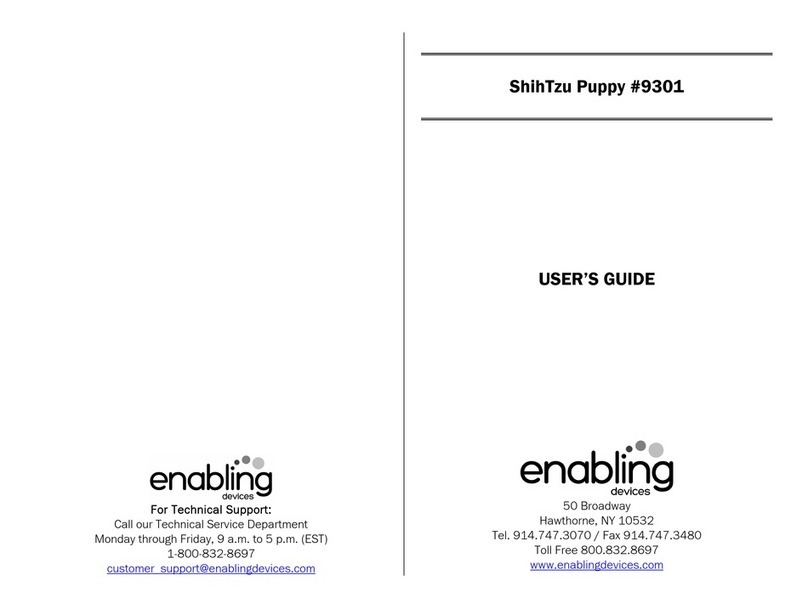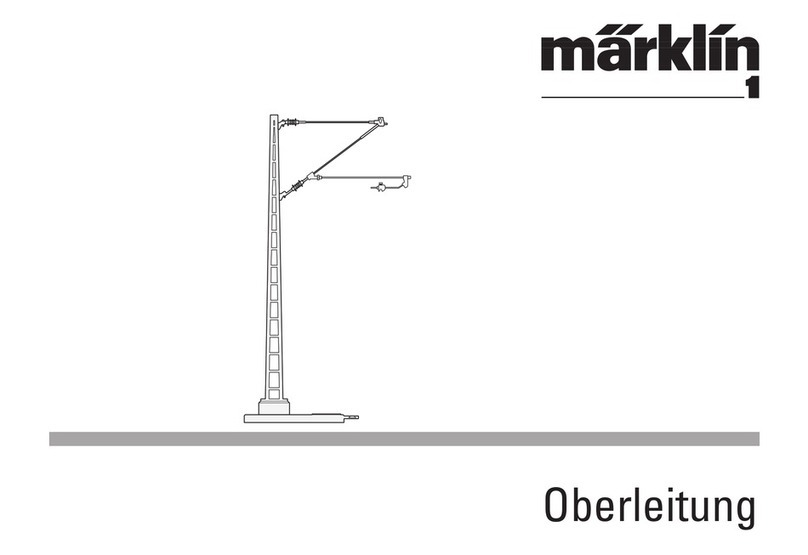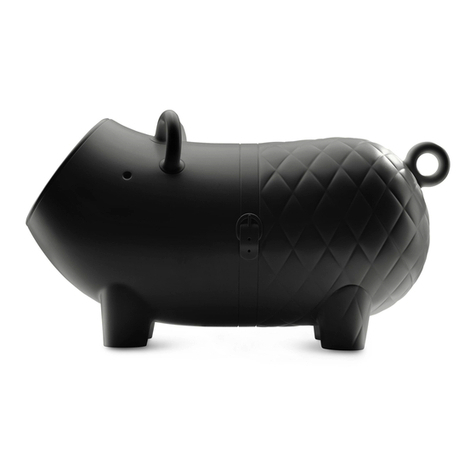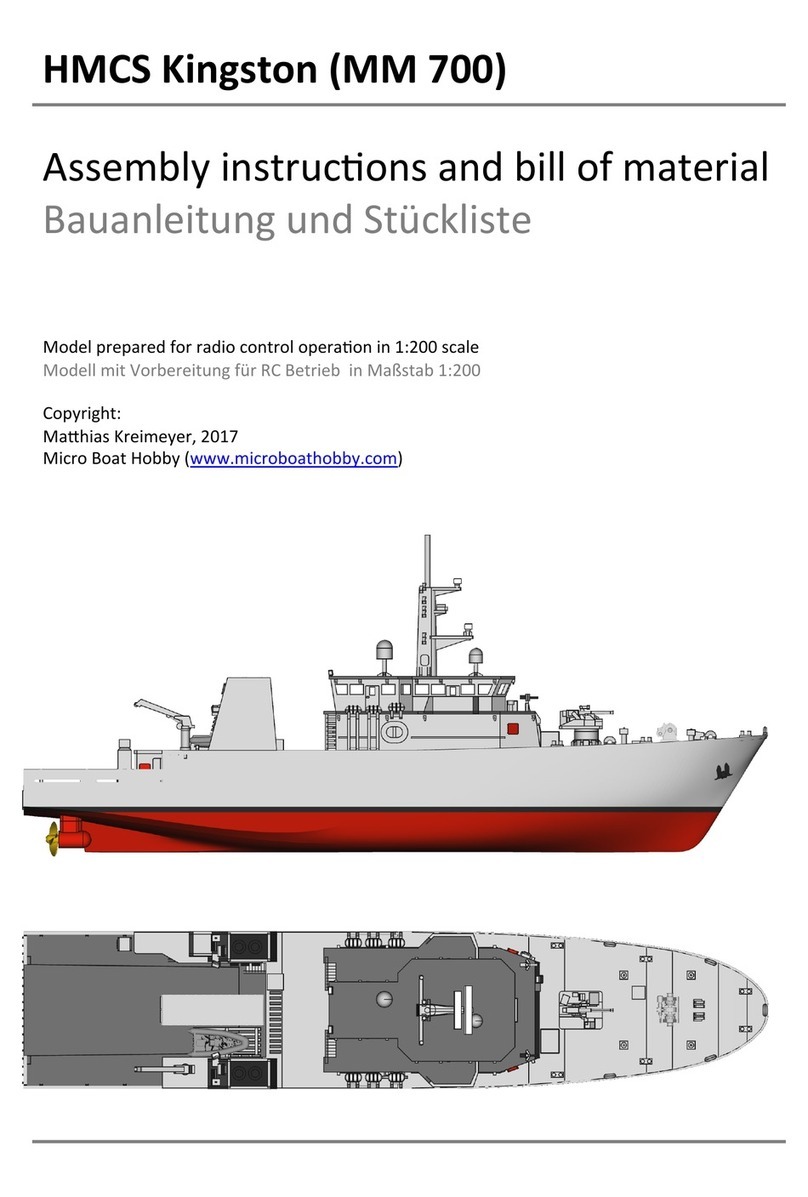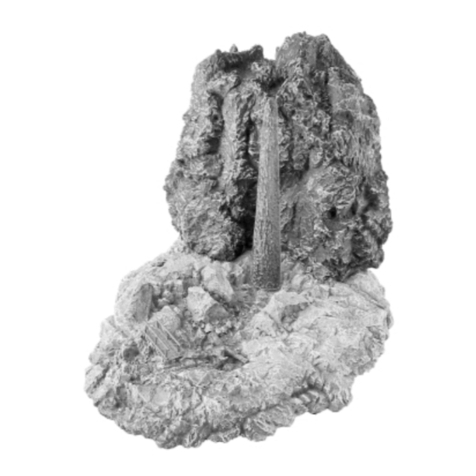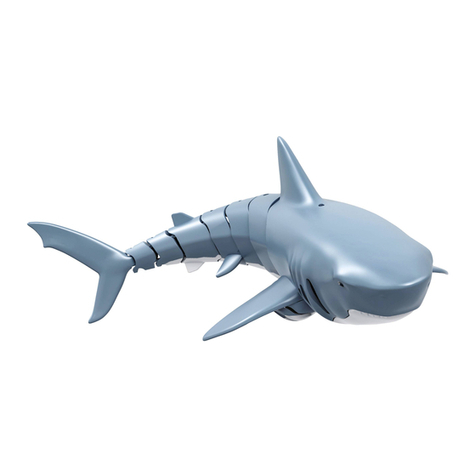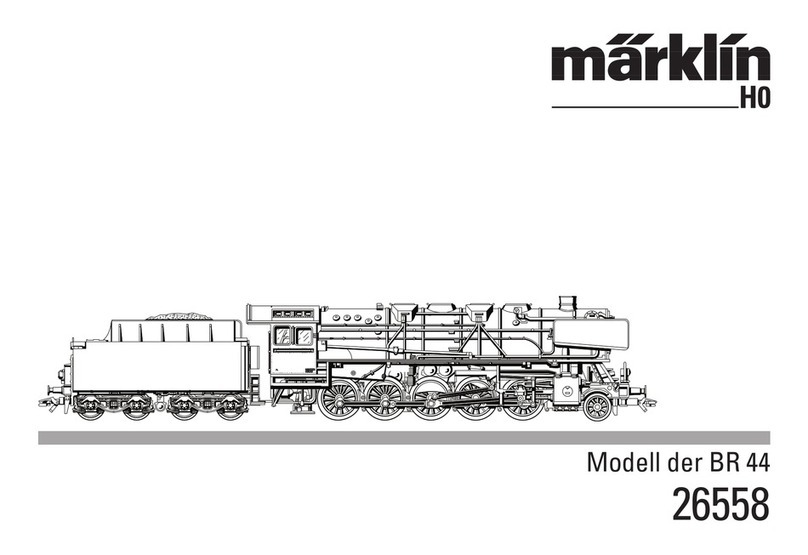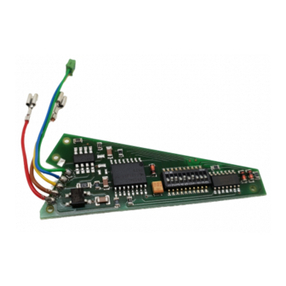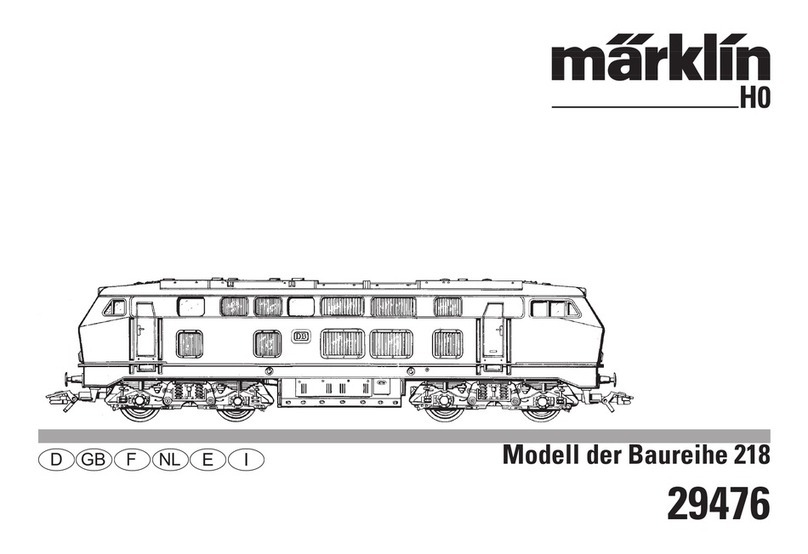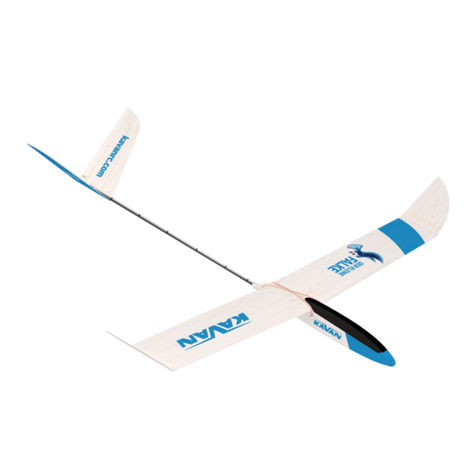
11 EN
The Fusion 270 default settings are appropriate for most users. We recommend flying with the default parameters before
making any adjustments.
WARNING: Always disconnect the motor wires from the ESC before performing the following steps.
After completing the adjustments, reconnect the motor wires to the ESC before attempting to fly the model.
Advanced Settings (AR636A only)
Gain Parameters
1. Cyclic P Gain Adjustment (Default 100%)
Higher gain will result in greater stability. Setting the gain
too high may result in random twitches if your model has
an excessive level of vibration. High frequency oscillations
may also occur if the gain is set too high.
Lower gain will result in less stability.Too low of a value may
result in a less stable model particularly outdoors in winds.
If you are located at a higher altitude or in a warmer climate,
higher gains may be beneficial—the opposite is true for
lower altitude or colder climates.
2. Cyclic I Gain Adjustment (Default 100%)
Higher gain will result in the model remaining still, but may
cause low frequency oscillations if increased too far.
Lower gain will result in the model drifting slowly.
If you are located at a higher altitude or in a warmer climate,
higher gains may be beneficial—the opposite is true for
lower altitude or colder climates.
3. Cyclic D Gain Adjustment (Default 100%)
Higher gain will improve the response rate of your inputs.
If the gain is raised too much, high frequency oscillations
may occur.
Lower gain will slow down the response to inputs.
4. Cyclic Response (Default 100%)
Higher cyclic response will result in a more aggressive
cyclic response.
Lower cyclic response will result in a less aggressive cyclic
response.
5. Tailrotor P Gain Adjustment (Default 100%)
Higher gain will result in greater stability. Setting the gain
too high may result in random twitches if your model has
an excessive level of vibration. High frequency oscillations
may also occur if the gain is set too high.
Lower gain may result in a decrease in stability.Too low
of a value may result in a less stable model particularly
outdoors in winds.
If you are located at a higher altitude or in a warmer climate,
higher gains may be beneficial—the opposite is true for
lower altitude or colder climates.
6. Tailrotor I Gain Adjustment (Default 100%)
Higher gain results in the tail remaining still. If the gain is
raised too far, low speed oscillations may occur.
Lower gain will result in the tail drifting in flight over time.
If you are located at a higher altitude or in a warmer climate,
higher gains may be beneficial—the opposite is true for
lower altitude or colder climates.
7. Tailrotor D Gain Adjustment (Default 100%)
Higher gain will improve the response rate to your inputs. If
raised too far, high frequency oscillations may occur.
Lower gain will slow down the response to inputs, but will
not have an effect on stability.
Telemetry Based Text Generator for Advanced Settings
Advanced parameters may be easily read in text form
when using a Spektrum™telemetry based transmitter.
Transmitters may require a firmware update to access this
function. To register and update Spektrum™ transmitters,
visit www.spektrumrc.com.
Turning On Text Gen
Access the Telemetry menu, select one of the “Empty”
Telemetry slots and scroll to select “Text Gen.” Set the
display option to active (Act). Once the Text Gen message
feature has been enabled, the transmitter will display text
based menus on the telemetry screens for adjusting PID
values and servo center points. The helicopter must be
bound and initialized for the Text Gen screen to function;
scroll from the home screen past the telemetry screen(s)
to access the Text Gen screen.
Using Text Gen
The available features and stick inputs used to manipulate
the menus are the same as the methods outlined in the
following section, but using the text based programming is
more intuitive. Refer to the transmitter manual for details
on how to utilize telemetry menus.




















